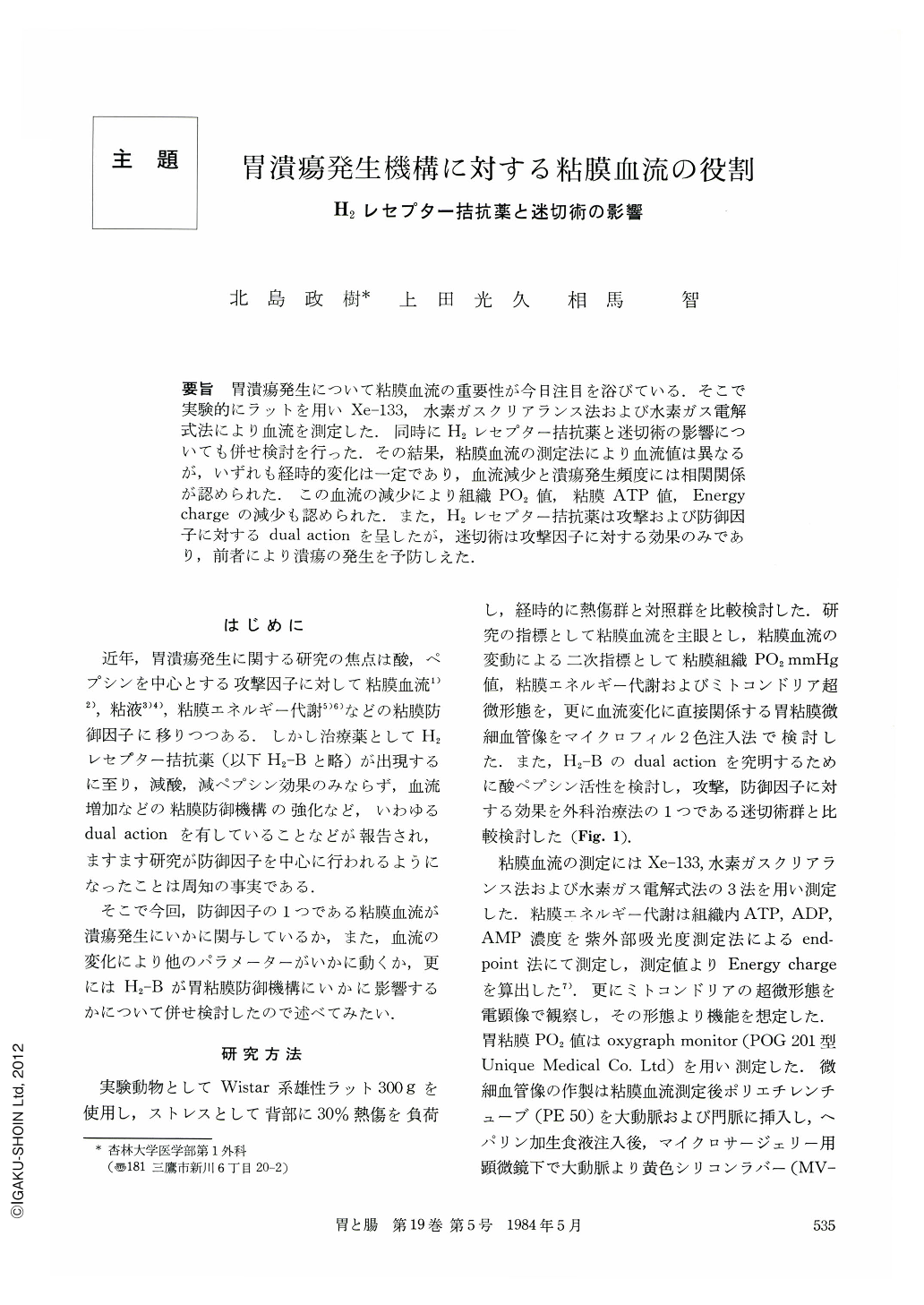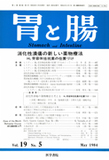Japanese
English
- 有料閲覧
- Abstract 文献概要
- 1ページ目 Look Inside
要旨 胃潰瘍発生について粘膜血流の重要性が今日注目を浴びている.そこで実験的にラットを用いXe-133,水素ガスクリアランス法および水素ガス電解式法により血流を測定した.同時にH2レセプター拮抗薬と迷切術の影響についても併せ検討を行った.その結果,粘膜血流の測定法により血流値は異なるが,いずれも経時的変化は一定であり,血流減少と潰瘍発生頻度には相関関係が認められた.この血流の減少により組織PO2値,粘膜ATP値,Energy chargeの減少も認められた.また,H2レセプター拮抗薬は攻撃および防御因子に対するdual actionを呈したが,迷切術は攻撃因子に対する効果のみであり,前者により潰瘍の発生を予防しえた.
As to the pathogenesis of gastric ulcer, several theories have been postulated including acid and pepsin hypersecretion. Recently, attention has been focused on gastric mucosal microcirculation. The purpose of these studies was to investigate the relationship of microcirculation, acid, pepsin activities, the influence of H2-receptor antagonist (Cimetidine), truncal vagotomy on aggressive and defence factors of gastric mucosa.
Rats subjected to a third degree burn of 30% of the body surface were investigated at times varying from immediately after burn to 72 hours and compared to sham-burned controls. Gastric mucosal blood flow was measured by Xe-133 and hydrogen gas clearances including electrochemically generated hydrogen. The tissue oxygen concentration was measured by Oxygraph Monitor. Fine microvascular structures were observed by infusion with two color silicon rubbers (MV-122 and MV-177) and Mercox CL resin. A quantitative evaluation of gastric mucosal adenine nucleotide was detected by the end-point method.
There was a high incidence and severity of mucosal lesions during the first few hours after burn and the reduction of mucosal blood flow was obviously in conformity with the incidence. Administration of H2-receptor antagonist influenced the impaired gastric microcirculation during burn shock as well as the decrease of acid and pepsin activities, but vagotomy did only aggressive factors.
The microvascular structural and histopathological studies revealed the complicated alternation of microcirculation, such as ischemic or congestive changes of gastric mucosa during the first few hours after burn. There was also a significant decline in the level of ATP and energy charge and of tissue oxygen concentration.
In conclusion, the impairment of mucosal blood flow is the first step in the sequence of events that leads to the formation of gastric ulcer. As the second step, hypoxic mucosa rendered it more susceptible to damage by acid and pepsin.

Copyright © 1984, Igaku-Shoin Ltd. All rights reserved.


